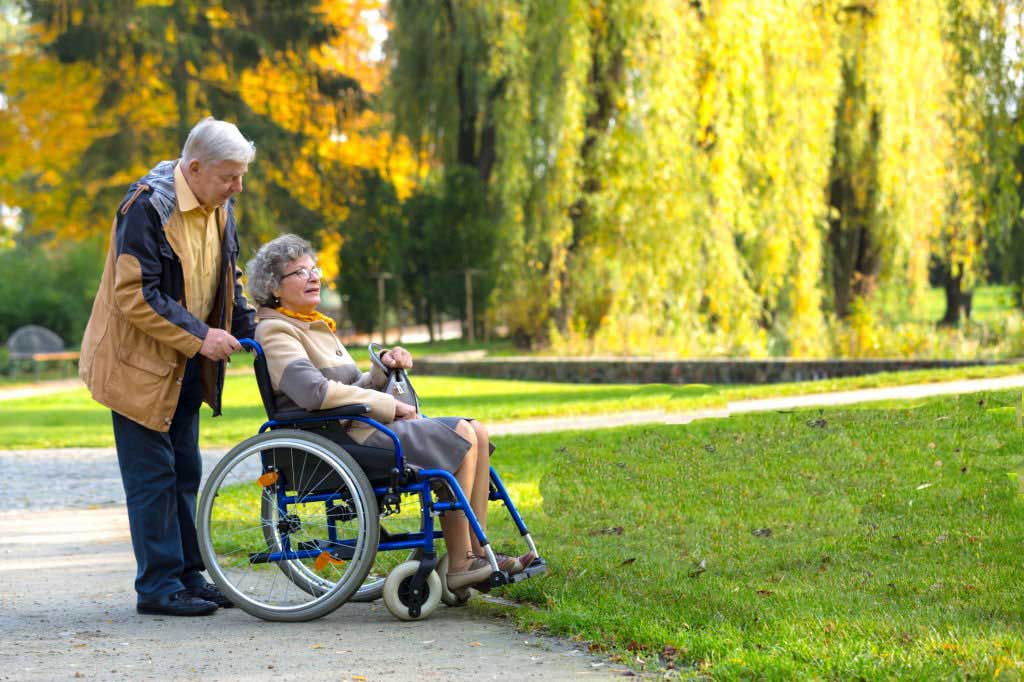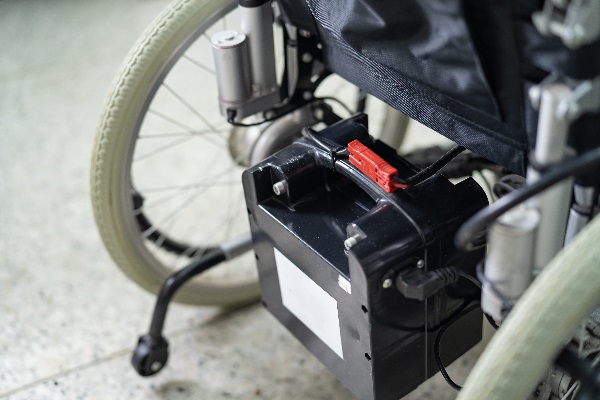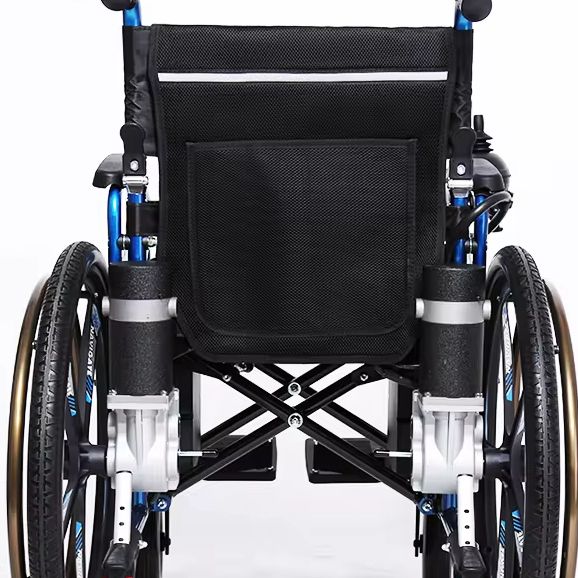When considering the best mobility devices for elderly individuals to use outdoors, several options stand out due to the features, benefits, and user experiences. These aids are designed to enhance mobility, safety, and independence while navigating various terrains outside the home.
What are the commonly used mobility devices for elderly?
Rollator
Rollators are walkers equipped with wheels on all four legs, making them easier to push than traditional walkers.
Here are the kinds of rollator walkers: Aluminium Rollator Walker, Foldable Rollator Walker and Lightweight Rollator Walker, some of them equiped with a motor, that can help the elderly to provide assistance when walking.
All the rollators typically feature a built-in seat and hand brakes, allowing users to take breaks when needed. The rollator has a storage bag under the seat, it is typically attached to the rollator frame using straps or clips, making it easy to install and remove, it offers a space to store Medications, Phone, Wallet, Keys and Water bottles.
Rollators are particularly beneficial for seniors who may tire easily or require frequent rests during outdoor activities.
The design of rollator promotes stability and safety while walking on uneven surfaces, which is crucial for outdoor environments. The robust frame and wide base of a rollator provide a solid foundation, distributing weight evenly and reducing the risk of tipping and wider stance offers increased stability, making it easier to maintain balance on uneven terrain. Larger wheels can absorb shock from bumps and uneven surfaces, providing a smoother ride.
User reviews often highlight the convenience of having a seat and storage basket for personal items.
Recommend Star: ★★★★☆
Wheelchairs
For those with more severe mobility challenges, wheelchairs—both manual and powered—are essential aids. Manual wheelchairs can be self-propelled or pushed by a caregiver, while powered wheelchairs offer greater independence for users who may lack upper body strength.
Here are the two main types of wheelchairs: Manual Wheelchair and Electric Wheelchair (powered wheelchair).
Manual Wheelchair: Manual wheelchairs are propelled by the user’s arm strength, it has handrims that the user pushes to move.
Here are the types of Manual Wheelchair
Bariatric Wheelchair:
- Features: Designed for individuals who are overweight or obese, with a reinforced frame and wider seat.
- Suitability: Suitable for individuals who require a wheelchair that can support a higher weight capacity.
- Advantages: Provides added safety and comfort for heavier individuals.
Transport Wheelchair:
- Features: Lightweight and foldable, with smaller wheels and a removable footrest.
- Suitability: Ideal for transport in vehicles and for individuals who need to be pushed by a caregiver.
- Advantages: Easy to store and transport.
Tilt-in-Space Wheelchair:
- Features: The entire seat and backrest tilt back simultaneously, maintaining a hip angle.
- Suitability: Suitable for individuals with limited trunk control or pressure sores.
- Advantages: Helps to reduce pressure on the buttocks and prevent skin breakdown.
Reclining Wheelchair:
- Features: The backrest reclines, allowing for a more relaxed position.
- Suitability: Suitable for individuals who need to rest or who have difficulty sitting upright for extended periods.
- Advantages: Provides comfort and reduces fatigue.

Electric Wheelchair: Electric wheelchairs are powered by batteries and controlled with a joystick or other controls, that can help the elderly to provide assistance with a trip that lasted a long time.
These wheelchairs are designed for both indoor and outdoor use, providing comfort and convenience for longer distances.
Users often find that wheelchairs allow them to participate in community activities without feeling limited by their mobility issues.
Recommend Star: ★★★★★
Walkers
Walkers are assistive devices that provide support and stability for individuals who have difficulty walking independently.
Traditional walkers provide substantial support with four points of contact with the ground. Some models come with wheels on the front legs to facilitate easier movement without lifting the walker entirely.
Aluminium Folding Walker are ideal for seniors who need consistent support when walking outdoors but may not require the additional features of a rollator.
Standard Walker
- Features: Four legs, adjustable height, and typically used with two hands.
- Uses: Provides maximum stability for individuals who need significant support. Ideal for those with balance issues or who have recently undergone surgery.
User feedback indicates that walkers help improve confidence while navigating outdoor spaces.
Recommend Star: ★★★☆☆
Mobility Scooters
Mobility scooters are electric vehicles that provide excellent support for seniors who may struggle with walking long distances.
They come in three or four-wheel designs, offering stability and ease of maneuverability.
Similar to Mobility Scooters, golf carts sometimes become a means of transportation for the elderly, and their good structure and stability can meet the needs of short-distance travel for the elderly.
Features: include adjustable seats, armrests, and storage options, making them ideal for outdoor use in parks, shopping centers, and urban environments.
Users appreciate the independence these scooters provide, allowing elderly to engage in social activities without relying on others for transportation.
Recommend Star: ★★☆☆☆
Canes (Single-point and Quad Canes)
Canes are lightweight mobility devices that offer balance support for seniors with minor mobility issues.
- Single-point canes: Portable Walking Cane is suitable for those needing minimal assistance.
- Quad canes: provide a broader base of support for individuals requiring more stability.
Users appreciate their portability and ease of use in various outdoor settings.
Recommend Star: ★☆☆☆☆
Tips of choosing the right mobility devices for elderly
Rollators are walkers equipped with wheels on all four legs, making them easier to push than traditional walkers.
Types of Mobility Aids
An exploration of various types of mobility aids available for outdoor use, including walkers, rollators, scooters, and canes, highlighting their specific features.
- For the long journey(10-25km), the electric wheelchair and the scooter must be the perfect choice. If you just go for a moderate distance(5-10km), the rollator and the manual wheelchair is available.
- If an elderly person relies on a cane for balance or support, it’s likely essential for their mobility, even on short trips.
Factors to Consider
Key factors to consider when selecting mobility aids for outdoor use, such as weight, portability, stability, and terrain adaptability.
Top Mobility Aids for Outdoors
A detailed list of the best mobility aids for outdoor use, including specific models and their features, benefits, and suitability for seniors.
User Reviews and Recommendations
Insights from users and experts on the effectiveness and reliability of various mobility aids, including personal experiences and recommendations.
Safety Features in Mobility Aids
An overview of essential safety features in mobility aids that enhance user safety during outdoor activities, such as brakes, lights, and stability enhancements.
Maintenance and Care
Guidelines on how to maintain and care for mobility aids to ensure longevity and optimal performance, especially for outdoor use.
In summary, the best mobility devices for elderly of outdoor use include mobility scooters, rollators, wheelchairs, walkers, and canes. Each option offers unique features tailored to different levels of mobility needs and preferences.
Wheelchairs and rollators stand out for their ability to enhance independence and safety outdoors, while mobility scooters provide essential support for those with significant mobility challenges.
Ageally consistently highlight the importance of comfort, stability, and ease of use across mobility devices for elderly, making them invaluable tools for maintaining an active lifestyle as one ages.















